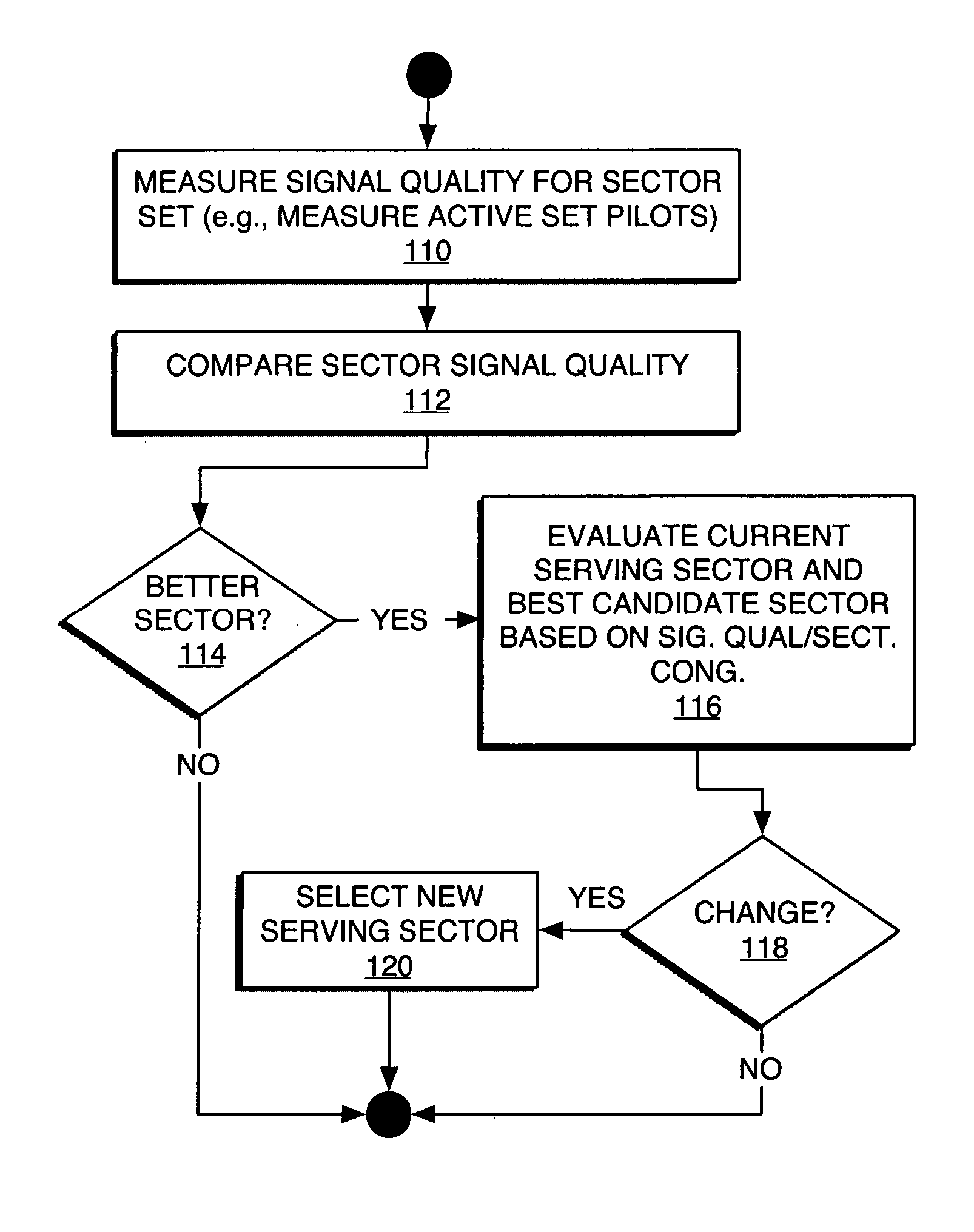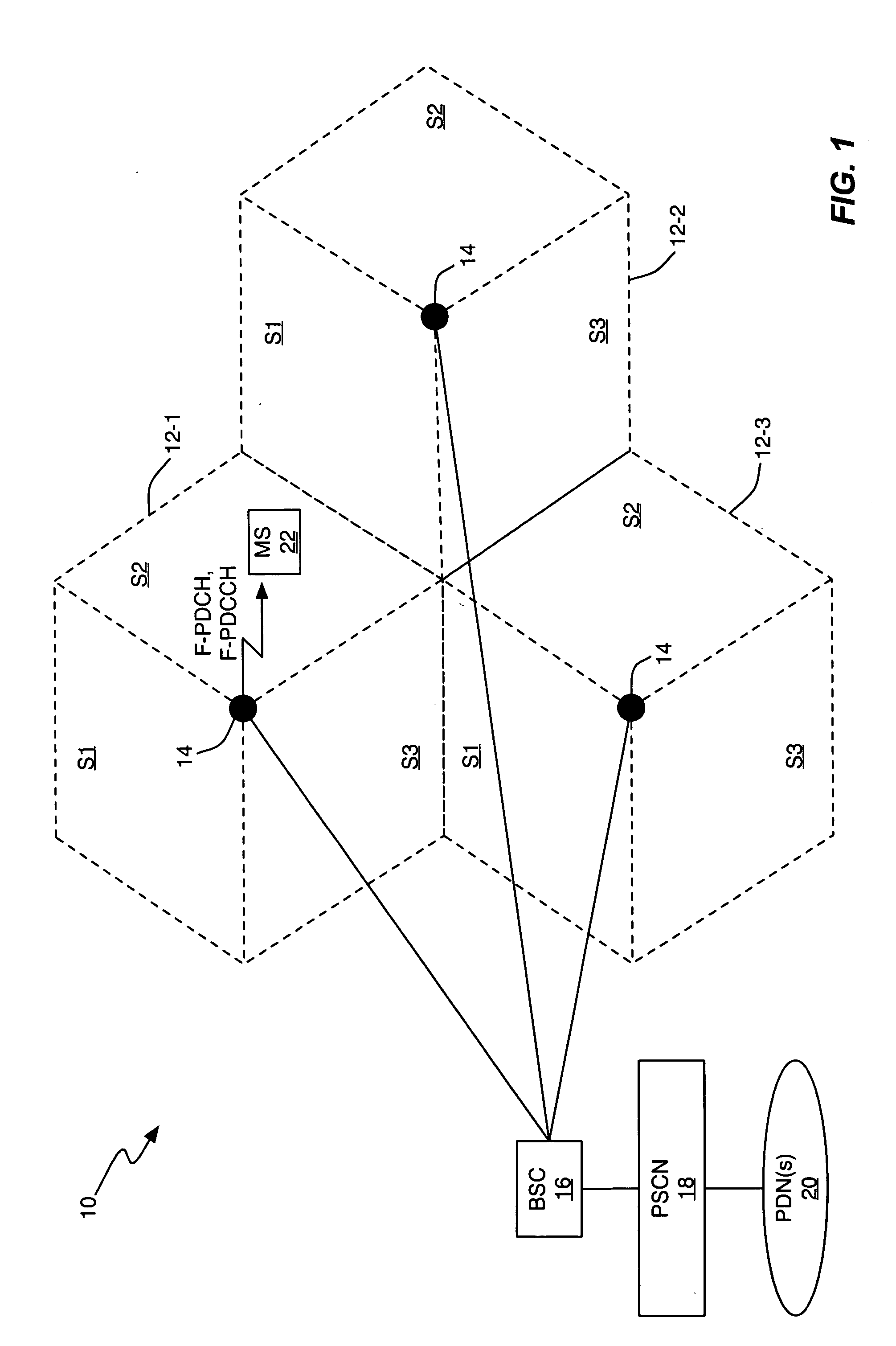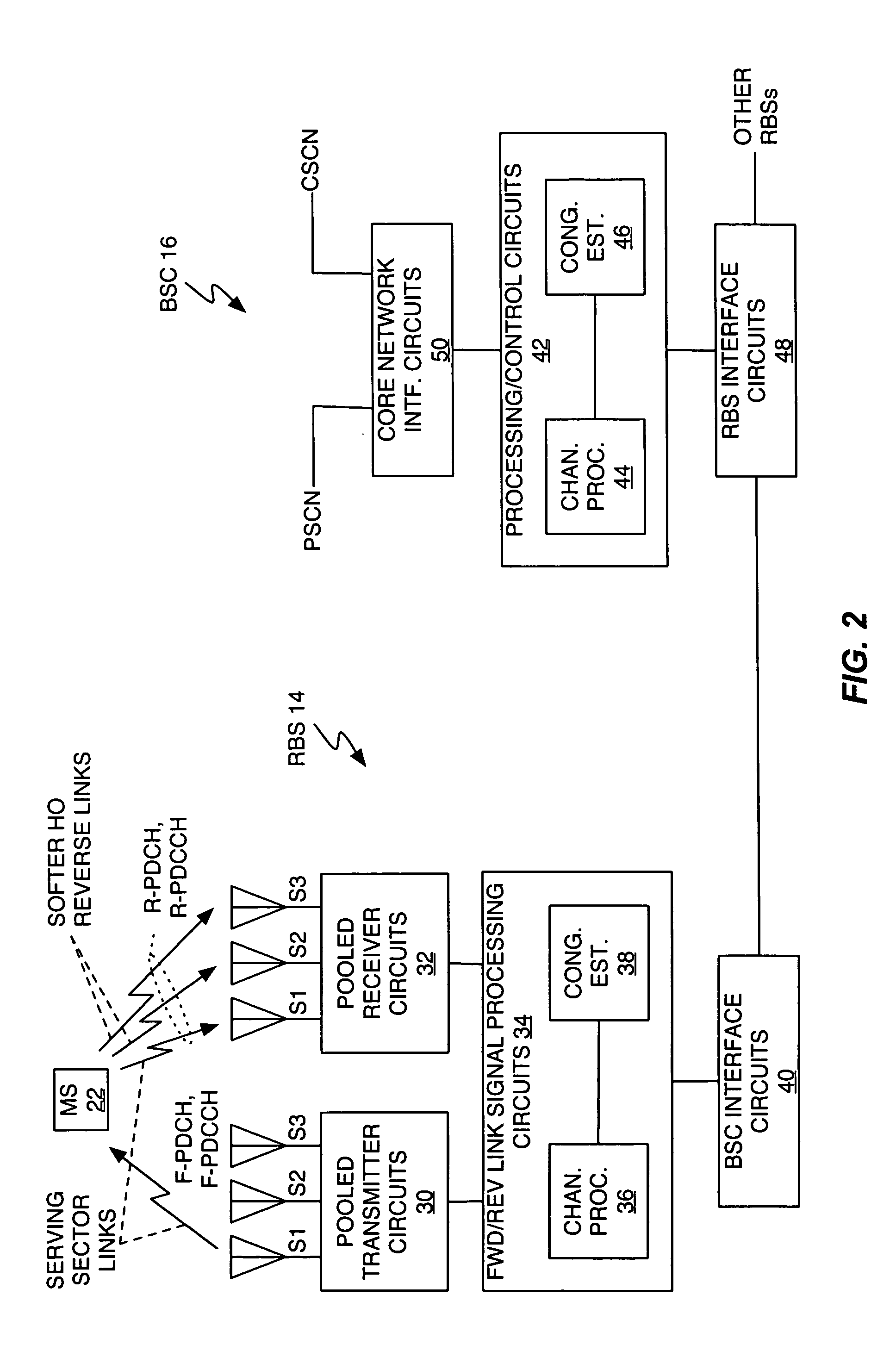Method and apparatus for congestion control in high speed wireless packet data networks
a packet data network and high-speed technology, applied in the field of wireless communication networks, can solve the problems of not necessarily ensuring, and the conventional network is left without any direct ability to perform “load balancing
- Summary
- Abstract
- Description
- Claims
- Application Information
AI Technical Summary
Benefits of technology
Problems solved by technology
Method used
Image
Examples
Embodiment Construction
[0026] The present invention provides a method and apparatus to base mobile station sector selection operations at least in part on knowledge of sector congestion levels. An exemplary wireless communication network 10 is partially illustrated in FIG. 1. Network 10 may comprise, for example, a cellular communication network based on the IS-2000 standards, or based on the W-CDMA standards. As illustrated, network 10 comprises a Radio Access Network (RAN) including Radio Base Stations (RBSs) 14 and a Base Station Controller (BSC) 16, and a Packet Switched Core Network (PSCN) 18, which communicatively couples network 10 to one or more Public Data Networks (PDNs) 20—e.g., the Internet. Those skilled in the art will appreciate that network 10 may include additional entities that are not illustrated for clarity.
[0027] Network 10 provides radio coverage organized as a plurality of radio cells 12-1,12-2, and 12-3, with each cell providing three sectors S1, S2, and S3, of radio coverage. Not...
PUM
 Login to View More
Login to View More Abstract
Description
Claims
Application Information
 Login to View More
Login to View More - R&D
- Intellectual Property
- Life Sciences
- Materials
- Tech Scout
- Unparalleled Data Quality
- Higher Quality Content
- 60% Fewer Hallucinations
Browse by: Latest US Patents, China's latest patents, Technical Efficacy Thesaurus, Application Domain, Technology Topic, Popular Technical Reports.
© 2025 PatSnap. All rights reserved.Legal|Privacy policy|Modern Slavery Act Transparency Statement|Sitemap|About US| Contact US: help@patsnap.com



